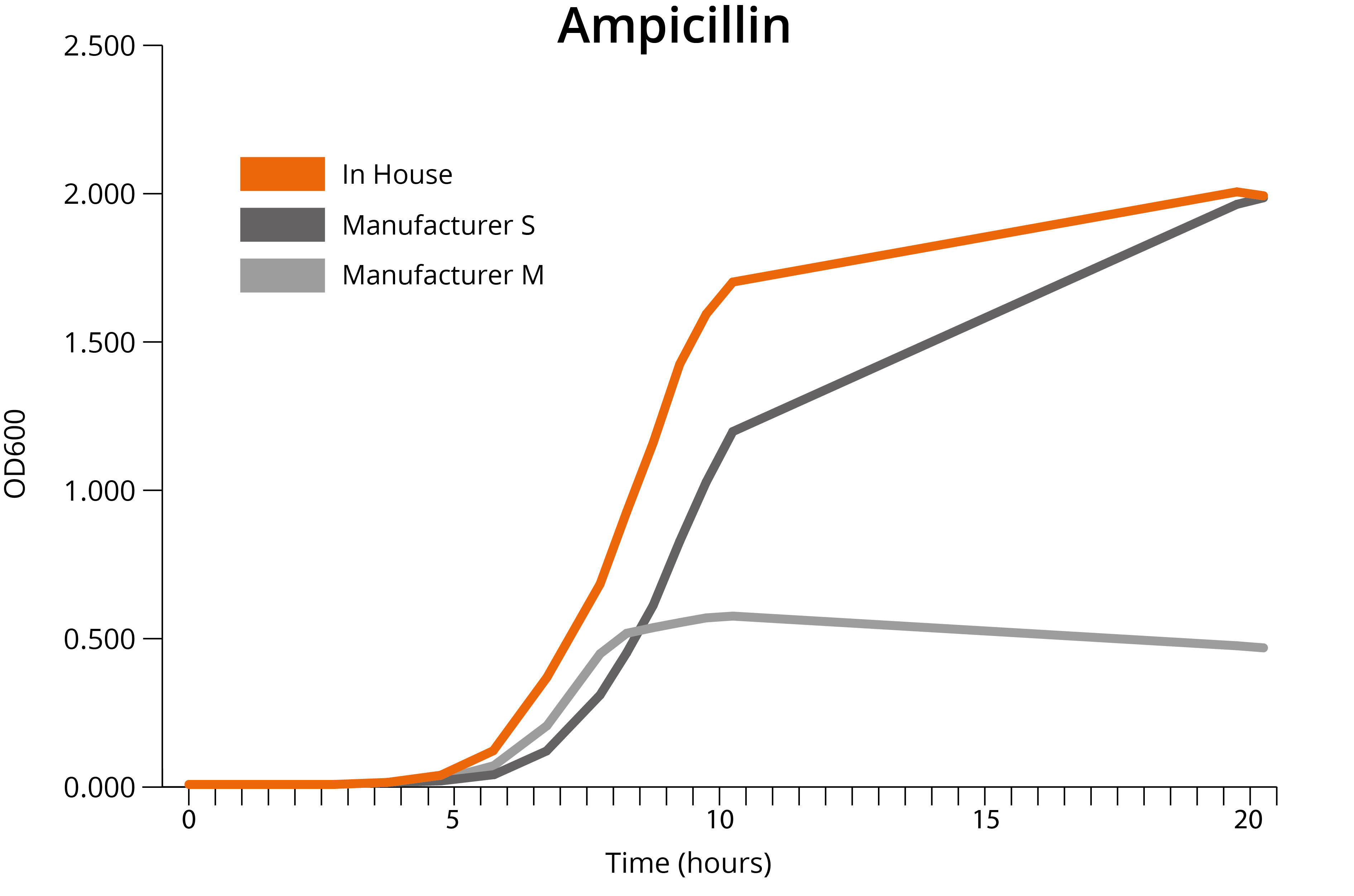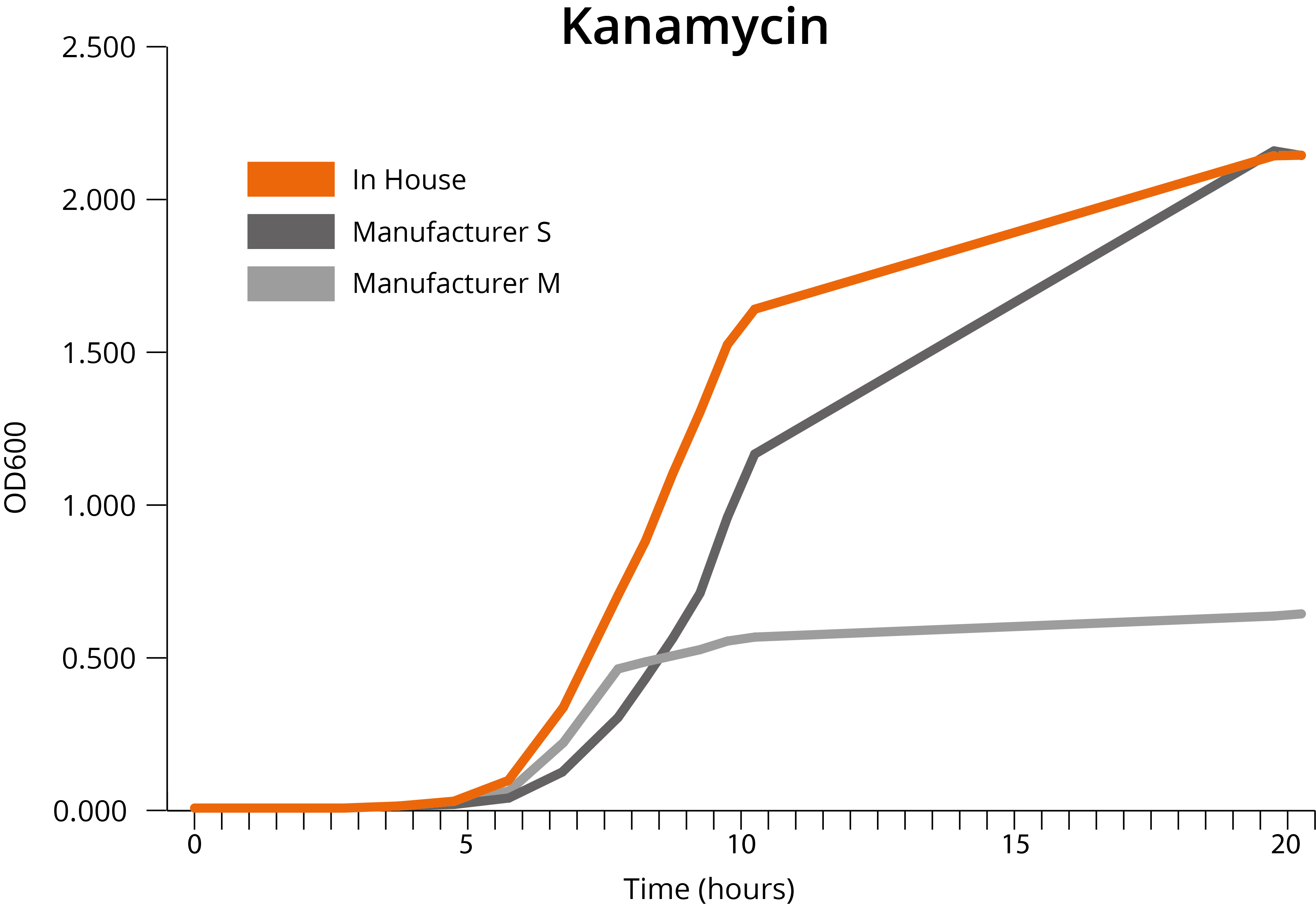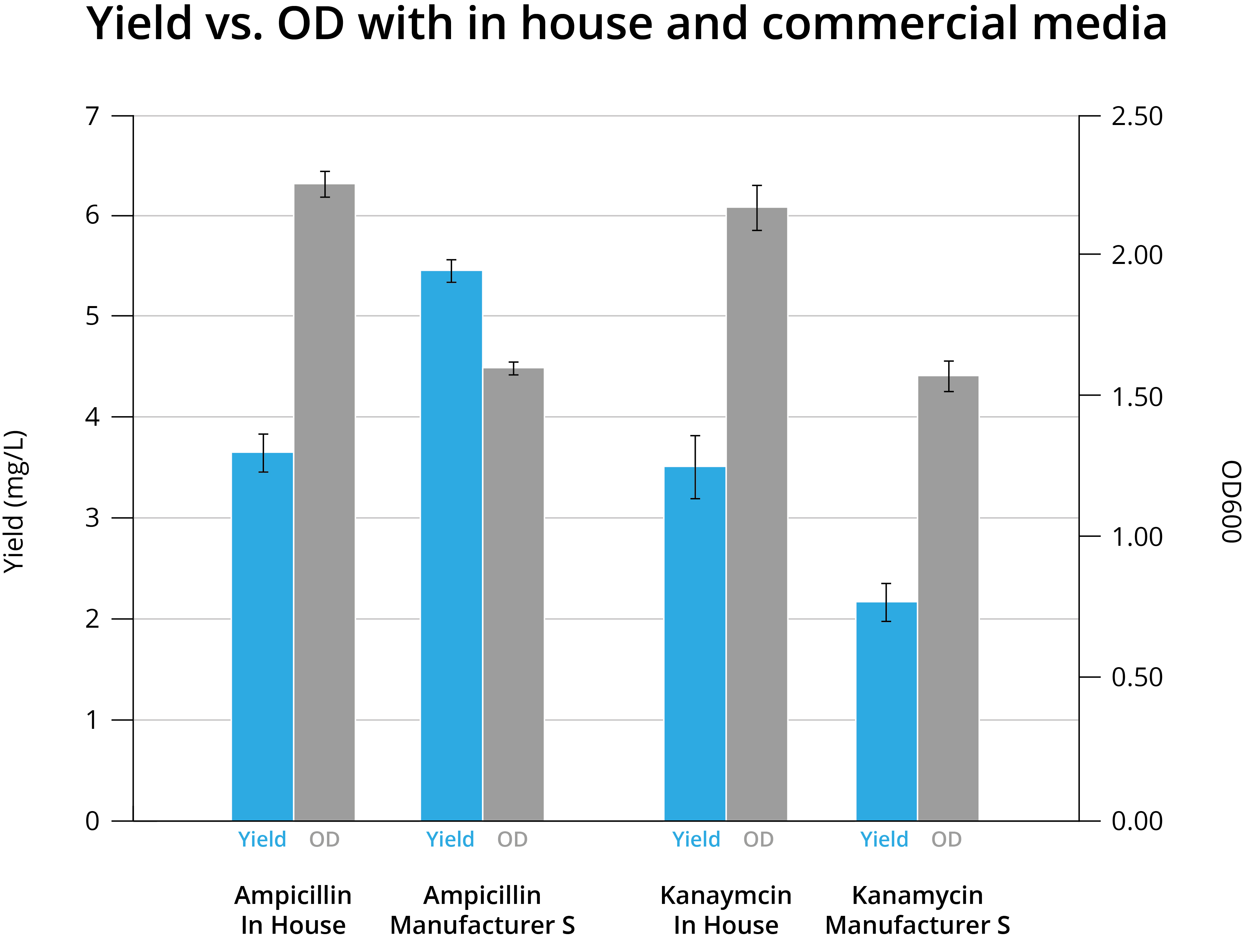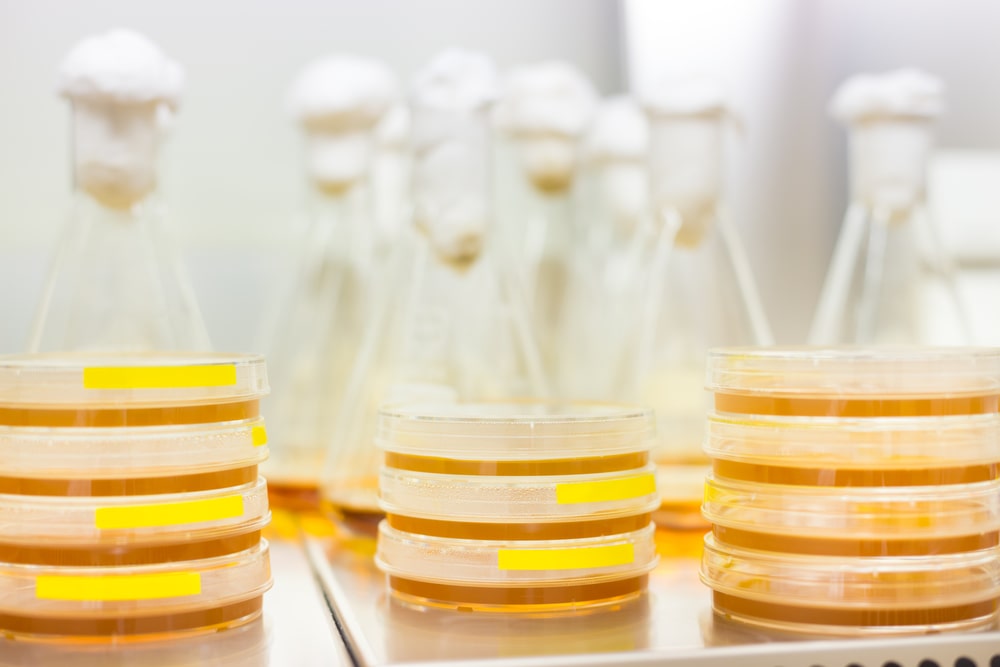Buy some off-the-shelf LB, whack in your bugs, job done? Not so fast there, it turns out there are some subtleties in plasmid production that you may not have thought would exist as our R&D scientist Ludovic Laigle explains…
As part of our R&D process, LB media was trialled from different sources:
- In-house produced LB using high-grade reagents
- Commercial premixed LB from Manufacturer M
- Commercial premixed LB from Manufacturer S
The aim of the study was to determine whether the source of LB media for the growth of plasmid in E. coli would have an impact on plasmid yields.
Resistance isn’t futile
100ml of each media under investigation was prepared with ampicillin or kanamycin, and inoculated with identical starter cultures of E. coli containing either an ampicillin resistance plasmid or a kanamycin resistance plasmid. Cultures were incubated at 37°C with shaking and readings for OD600 taken at regular intervals.


Results for both resistance genes were nearly identical; in house LB outperformed commercial LB in terms of reducing lag phase and entering exponential growth quicker. Shockingly, LB from Manufacturer M plateaued at a far lower OD than the other two media, suggesting a critical nutrient had been exhausted.
Higher OD = better yield?
It turns out that this is also not always the case. Four different genes on two different plasmid backbones were grown in the two better-performing media for 16 hours then harvested, midiprepped, and the plasmid DNA yield measured by spectrophotometry. Results followed the same pattern for each gene, so have been combined for simplicity.

In house LB media consistently produced higher ODs, however this only translated into higher plasmid yields in the kanamycin vector. For the ampicillin vector the higher plasmid yield was obtained with the lower OD culture. The vector backbones differed by more than just the resistance gene, so no comment is possible on the specific effect of the resistance gene, but as Ludovic reiterates there is still a resounding take home message:
“If you want to maximise your plasmid yields in E. coli, it is worth investigating different LB media sources and plasmid backbones. By doing this, the many gigapreps we do every week at The Native Antigen Company consistently yield multiple tens of mg each, allowing a potentially unviable protein target to become viable, and driving down the cost of human recombinant protein production.”

